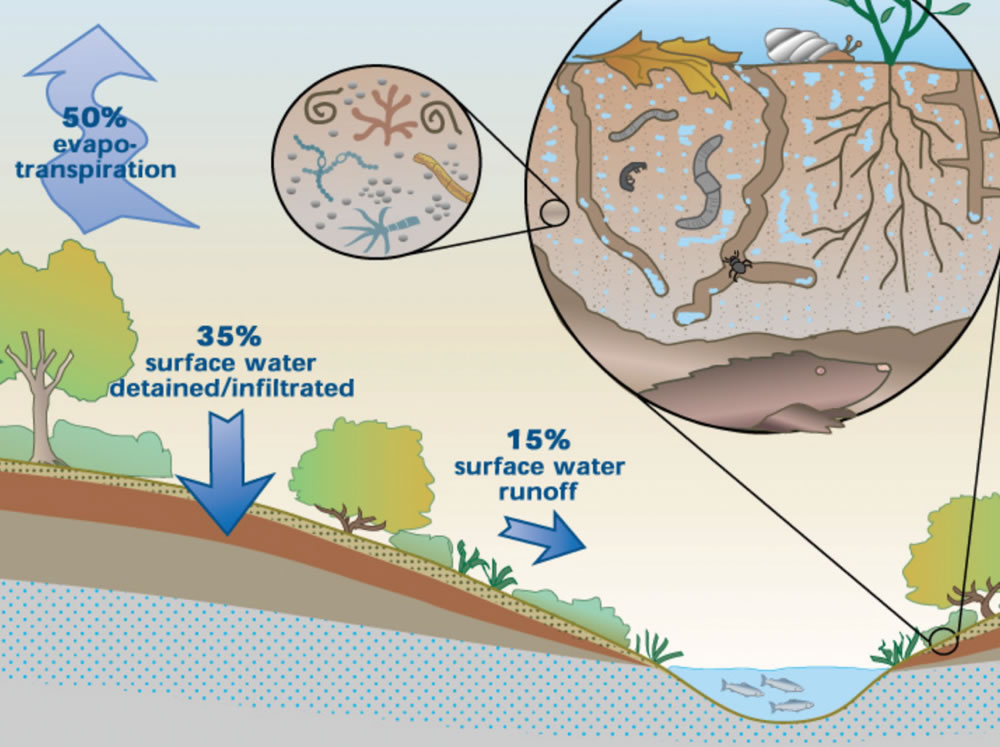Selection of projects recognized as advancing organics recycling.
Western Washington: Soils For Salmon
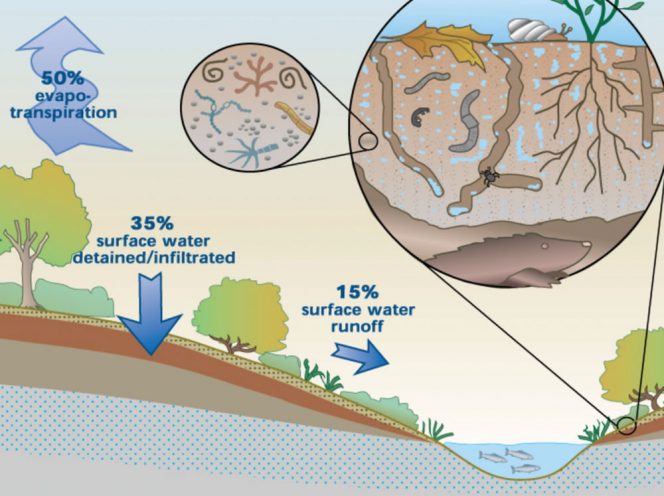 In 1999, two federal agencies announced that wild Puget Sound Chinook salmon and the wild Puget Sound bull trout (in the salmon family) were officially listed as threatened species under the Endangered Species Act. “For the first time in history, a large urban area will feel the impacts of an ESA listing,” wrote Sego Jackson, Josh Mark and Holly Wescott in an April 2000 BioCycle article, “Organics Play Role In Salmon Recovery In Pacific Northwest”. “The Washington Organic Recycling Council and its member agencies have identified a unique opportunity to expand the beneficial uses of organics to help in this historic effort to save the species.” A solution put forth by this group was dubbed “Soils for Salmon,” designed to retain native soil and/or incorporate soil amendment into new construction to support species recovery. Soils for Salmon has been extensively covered in BioCycle since that original article.
In 1999, two federal agencies announced that wild Puget Sound Chinook salmon and the wild Puget Sound bull trout (in the salmon family) were officially listed as threatened species under the Endangered Species Act. “For the first time in history, a large urban area will feel the impacts of an ESA listing,” wrote Sego Jackson, Josh Mark and Holly Wescott in an April 2000 BioCycle article, “Organics Play Role In Salmon Recovery In Pacific Northwest”. “The Washington Organic Recycling Council and its member agencies have identified a unique opportunity to expand the beneficial uses of organics to help in this historic effort to save the species.” A solution put forth by this group was dubbed “Soils for Salmon,” designed to retain native soil and/or incorporate soil amendment into new construction to support species recovery. Soils for Salmon has been extensively covered in BioCycle since that original article.
Research and advocacy conducted by many individuals and agencies under the Soils for Salmon banner helped lead the Washington State Department of Ecology to write a “Post-Construction Soil Quality and Depth” Best Management Practice for western Washington that required builders to either preserve native soil and vegetation where possible, or restore healthy soil functions by breaking up compaction and tilling in compost. An article in BioCycle by David McDonald in 2011, “How To Make Organics Recycling Business As Usual,” chronicled how Soils for Salmon helped build the foundation of essential green infrastructure services: “For more than 20 years, WORC has brought together the organics industry, regulators, local governments and scientists. That collaboration engendered shared vision and practical strategies to slowly change regulations, local policies and markets. WORC’s “Soils for Salmon” initiative expanded that network of collaboration to include builders and developers, storm water regulators and environmental activists. …. Our “Soils for Salmon” hook was pretty easy to explain to policy makers, regulators, industry and citizens. Recognizing your allies and building shared strategies is the starting place for market, regulatory and social transformation.”
— Nora Goldstein, BioCycle
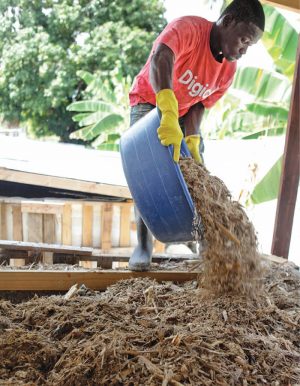 Haiti: SOIL Haiti
Haiti: SOIL Haiti
Everybody knows “Kill two birds with one stone.” Simple yet elegant. Soil Haiti, founded in 2006 by Sasha Kramer, knows how both apply to providing household sanitation and restoring soils. It provides portable toilets (5 gallon buckets with a standard seat and an enclosure) to households in Haitian cities. The organization employs people to collect the buckets and take them to composting sites where the contents are treated to kill pathogens. The finished compost is used by local farmers.
Soil Haiti’s program is an example of circular economy on a very basic level. Much of the world is faced with two critical problems: billions of people without access to a safe place to defecate and degraded soils that don’t produce enough to eat. “Night soil” kept the farms in Asia highly productive for centuries but did nothing to treat the pathogens in the waste. With the advent of synthetic fertilizers and highly technical approaches to farming, that approach has largely been forgotten. Silver bullet solutions for sanitation are often high tech, high cost, and ignore the potential tie to soil health. SOIL Haiti has partnered with researchers at Stanford University to evaluate the efficacy of its efforts. The households involved in the program report increased pride in place among other benefits. We all know how the soil reacts. Soil Haiti has recently expanded its work to Port au Prince. Let’s hope for its continued expansion and success.
— Sally Brown, University of Washington
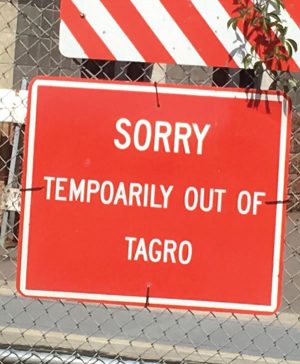 Tacoma, Washington: TAGRO
Tacoma, Washington: TAGRO
Loud and proud. That is what the City of Tacoma wastewater program is about its award-winning Tagro — the brand for a range of products that all contain the Class A biosolids produced in the plant. The fact that the Tagro classic contains biosolids is nice. But what the staff is proud of is that the Tagro classic works so well on turf and other plants. The potting soil also contains biosolids; says so right on the bag. Again, that is fine, certainly nothing to apologize about. What you brag about is how crazy the plants go when they are seeded directly into the stuff. The staff at Tagro gets that the poop angle is good for a joke or two (tootsie rolls are always available at the office). They appreciate the environmental benefits of recycling the stuff. But most importantly, they understand the importance of producing an excellent product and marketing it with an emphasis on a well-trained staff that focuses on customer service. That goes a long way in explaining the “Sold Out” sign currently hanging from the plant’s gate.
— Sally Brown, University of Washington
California: Marin Carbon Project
It turns out that when you add compost to degraded soil, that soil improves. A review paper back in the early 1980s summarized this pretty well. Subsequent papers have pretty much shown the same thing. A key component of improving soil is increasing soil organic matter. The papers have shown that too. Us soil scientists get really excited about it and then life goes on. Us scientists tell each other about it, do additional papers to confirm it and nothing much happens. The U.S. Department of Agriculture (USDA) doesn’t notice. State and regional policy makers don’t notice. Municipal residuals managers focus on tip fees and contamination.
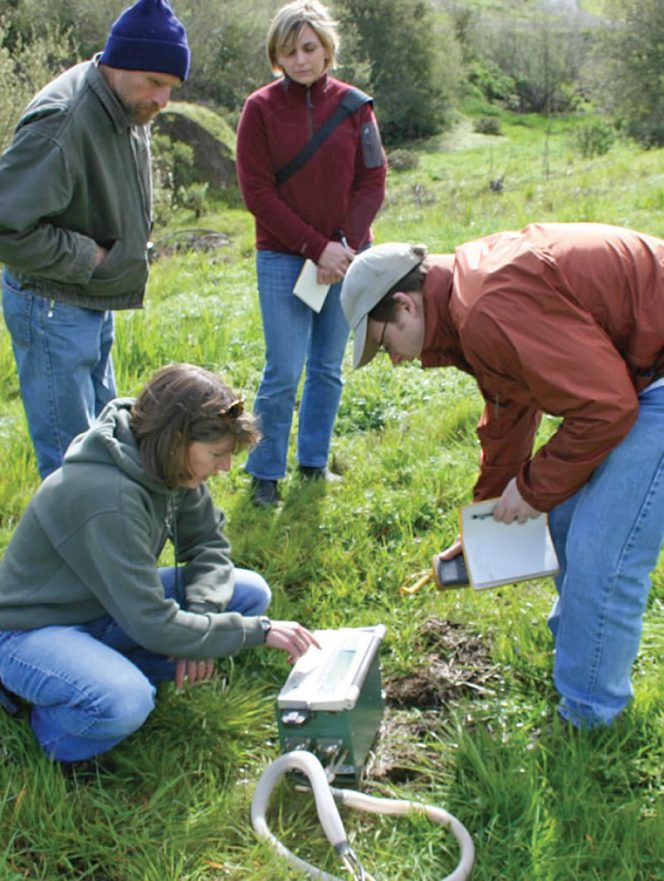 So it was until the Marin Carbon Project (MCP) came along. John Wick, owner of Nicasio Native Grass Ranch in Marin County, California, partnered with Dr. Whendee Silver at University of California Berkeley (not your typical soil scientist/agronomist) to investigate what would happen if they composted animal manure and added it to degraded rangeland. No surprise to us scientists — Wick and Silver found it improved the soil and that the soil stored more carbon. The big surprise was how many people started paying attention.
So it was until the Marin Carbon Project (MCP) came along. John Wick, owner of Nicasio Native Grass Ranch in Marin County, California, partnered with Dr. Whendee Silver at University of California Berkeley (not your typical soil scientist/agronomist) to investigate what would happen if they composted animal manure and added it to degraded rangeland. No surprise to us scientists — Wick and Silver found it improved the soil and that the soil stored more carbon. The big surprise was how many people started paying attention.
The MCP has done an excellent job of supporting scientific research and conducting solid science. What makes this project so unique and so important is the ability of the project’s board to call attention to this work and show how it can have widespread application and enormous benefits to soils across California and elsewhere. MCP board members notably include the USDA Natural Resources Conservation Service, the Cooperative Extension service, the County Agricultural Commissioner and the Carbon Cycle Institute. This project may well provide the tipping point for recognition and adoption of compost use to restore soils.
— Sally Brown, University of Washington


